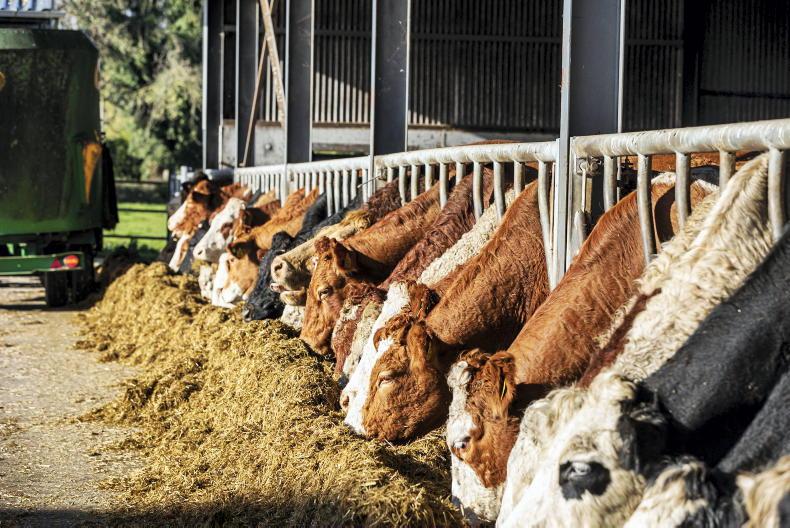As December gets under way, farmers will be settled in to the winter feeding routine. But there will be other management jobs to sort this month, some of which are outlined.
1. Dehorning autumn calves
Calves born this autumn should have been dehorned by now. But if not, try to get on top of this job in December before horns get too strong.
In some cases, poor disbudding technique means horns will have regrown on calves and will need removing a second time. Include any spring-born weanlings that were missed earlier this year.
2. Heat detection and autumn breeding
Cows that calve during September and October should be coming back in heat and breeding will be under way.
Keep these cows on a steady diet of good-quality silage, plus 1kg to 3kg/day of meal depending on forage quality during the breeding season and for four to five weeks post-service.
Early morning and late evening are usually the best times to pick up cows in heat. Applying some tail paint is a quick and low-cost way to aid heat detection.
3. Weighing cattle
Weighing stores will give a good handle on which animals to finish out of the shed, provided the economics stack up, and which animals to sell live in spring or put back to grass.
Include maiden heifers that will go to the bull next summer. A weight check in December will allow feed rates to be increased if heifers are behind schedule for weight gain.
4. Silage analysis
Cattle will be making good inroads into forage stocks. Get silage analysed in December to see if forage quality has altered as you move through the clamp.
If silage was tested earlier in autumn, don’t assume that feed value will remain consistent throughout the winter.
A mid-winter analysis means diets can be tweaked in good time, keeping finishing cattle and stores on track for weight gain.
Feed quality may well increase as you move through the silage clamp, meaning meal levels could be reduced which will save money.
5. Pre-calving minerals
Where cows are due to start calving in February, introduce pre-calving minerals at some point in December. Minerals should be offered from six to eight weeks before calving starts.
Having cows penned according to calving date means minerals only need to be fed to the earliest-calving animals, saving money. Minerals can be introduced to March- and April-calving cows in late January or February.
Read more
Teagasc’s Newford herd moves from Athenry to Roscommon
Watch: farmer fury in Carrick over ICBF changes
As December gets under way, farmers will be settled in to the winter feeding routine. But there will be other management jobs to sort this month, some of which are outlined.
1. Dehorning autumn calves
Calves born this autumn should have been dehorned by now. But if not, try to get on top of this job in December before horns get too strong.
In some cases, poor disbudding technique means horns will have regrown on calves and will need removing a second time. Include any spring-born weanlings that were missed earlier this year.
2. Heat detection and autumn breeding
Cows that calve during September and October should be coming back in heat and breeding will be under way.
Keep these cows on a steady diet of good-quality silage, plus 1kg to 3kg/day of meal depending on forage quality during the breeding season and for four to five weeks post-service.
Early morning and late evening are usually the best times to pick up cows in heat. Applying some tail paint is a quick and low-cost way to aid heat detection.
3. Weighing cattle
Weighing stores will give a good handle on which animals to finish out of the shed, provided the economics stack up, and which animals to sell live in spring or put back to grass.
Include maiden heifers that will go to the bull next summer. A weight check in December will allow feed rates to be increased if heifers are behind schedule for weight gain.
4. Silage analysis
Cattle will be making good inroads into forage stocks. Get silage analysed in December to see if forage quality has altered as you move through the clamp.
If silage was tested earlier in autumn, don’t assume that feed value will remain consistent throughout the winter.
A mid-winter analysis means diets can be tweaked in good time, keeping finishing cattle and stores on track for weight gain.
Feed quality may well increase as you move through the silage clamp, meaning meal levels could be reduced which will save money.
5. Pre-calving minerals
Where cows are due to start calving in February, introduce pre-calving minerals at some point in December. Minerals should be offered from six to eight weeks before calving starts.
Having cows penned according to calving date means minerals only need to be fed to the earliest-calving animals, saving money. Minerals can be introduced to March- and April-calving cows in late January or February.
Read more
Teagasc’s Newford herd moves from Athenry to Roscommon
Watch: farmer fury in Carrick over ICBF changes






 This is a subscriber-only article
This is a subscriber-only article










SHARING OPTIONS: